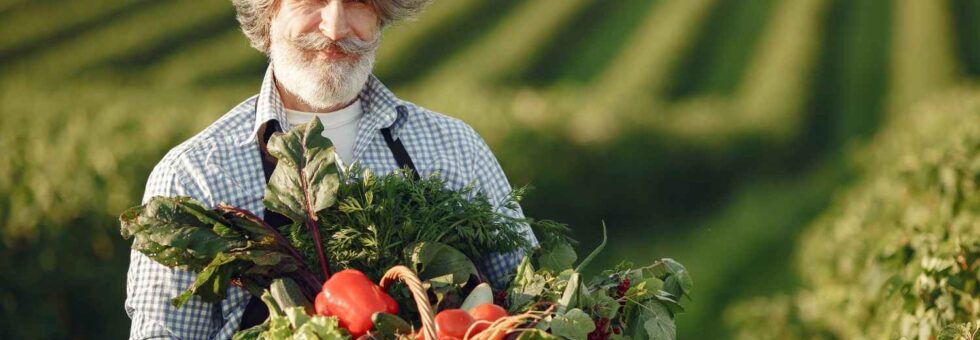Prologue to Mixed Farming
Mixed farming is an agricultural framework where the two yields and animals are raised on the same land. This strategy is turning out to be increasingly popular among farmers because of its versatility and sustainability. Consolidating different farming activities leads to a more balanced environment and increased efficiency. In this article, we will investigate the many benefits of mixed farming.
Agriculture can be a way to connect with your community, whether through local farmers’ markets, community gardens, or agricultural cooperatives
Increased Asset Effectiveness
One of the critical advantages of mixed farming is its effective utilization of assets. By integrating harvests and animals, farmers can use waste items from one cycle as contributions for another. For example, animal manure can be utilized as organic compost for crops, diminishing the requirement for chemical manures. This reusing of assets leads to a more sustainable farming framework, saving expenses and limiting environmental impact.
Enhanced Soil Richness
Mixed farming further develops soil richness by naturally enhancing the organic matter in the dirt. Crop deposits and animal manure enhance the dirt with essential supplements. The combination of various plant species and animals creates a different biological system, which lifts soil health and lessens the gamble of soil degradation. Farmers can achieve long haul efficiency by maintaining ripe soil.
Diversification of Pay Sources
Farmers who practice mixed farming partake in different revenue sources. They can sell yields, animals, and even handled items like dairy or meat. This diversification decreases financial gamble, as farmers are less reliant on a solitary item. Whenever crop costs are low, pay from domesticated animals can compensate, as well as the other way around. This financial stability is a major advantage of mixed farming.
Better Vermin and Disease Control
Mixed farming naturally enhances bug and disease control. The different range of yields and animals diminishes the probability of a solitary irritation or disease clearing out a whole farm. Yields can act as a barrier for animals diseases, and animals can assist with managing irritations that harm crops. This integrated framework limits the requirement for chemical pesticides and antibiotics, making farming all the more environmentally well disposed and financially savvy.
Upgraded Land Use
Mixed farming allows for the more effective utilization of available land. Farmers can develop crops on one part of their land while raising animals on another, or even integrate the two activities on the same plot. This adaptability guarantees that land is utilized to its maximum capacity, leading to higher efficiency per acre. Mixed farming is especially beneficial in areas where land is scarce or costly.
Environmental Sustainability
Mixed farming advances environmental sustainability by lessening the requirement for chemical sources of info and enhancing biodiversity. The integration of yields and animals diminishes the carbon impression of farming by advancing organic practices and limiting waste. By creating a self-sustaining biological system, mixed farming safeguards natural assets and lessen the impact of farming on the climate.
Note: Farm and fleet operations offer a wide range of benefits to farmers, rural residents, and local economies
Further developed Farm Versatility
Farmers practising mixed farming are stronger to external shocks, for example, climate change, market fluctuations, and disease outbreaks. The variety of harvests and domesticated animals creates a cradle against these dangers. In the event that one yield fails, others may in any case flourish, and animals can give an additional safety net. This versatility is crucial in today’s unpredictable agricultural climate.
Increased Efficiency
Mixed farming leads to higher overall efficiency by using collaborations among yields and domesticated animals. Animals can give labour, manure, and bug control, while crops offer food and asylum for animals. These interactions create a more useful and effective farming framework, with better returns per acre than traditional monoculture farming. Farmers can profit from increased yield and diminished input costs.
Decrease in Farm Expenses
Farmers practising mixed farming often experience lower creation costs. The integration of yields and animals decreases the requirement for external data sources like composts, pesticides, and animal feed. For example, animals can graze on crop build-ups, and manure can replace expensive chemical composts. These expense savings increase the profitability of mixed farming operations.
Upholds Biodiversity
Mixed farming adds to greater biodiversity by encouraging the development of various plant species and the raising of various animals. This variety keeps a healthy environment and supports beneficial untamed life like pollinators and predators that control bugs. Biodiversity also enhances the flexibility of the farming framework, making it more adaptable to changing environmental circumstances.
Effective Water Use

In mixed farming frameworks, water use is often more proficient. Yields and domesticated animals can share water assets, and the integration of plants and animals assists with maintaining soil dampness. Additionally, mixed farming lessens the requirement for irrigation by enhancing soil design and water maintenance. This leads to more readily water management and decreased water costs for farmers.
End
Mixed farming offers various benefits, including increased asset proficiency, further developed soil ripeness, expanded pay, and enhanced environmental sustainability. By integrating yields and domesticated animals, farmers can create a stronger, useful, and financially savvy farming framework. Mixed farming is a fantastic decision for those hoping to maximize the potential of their land while advancing sustainable agricultural practices.

